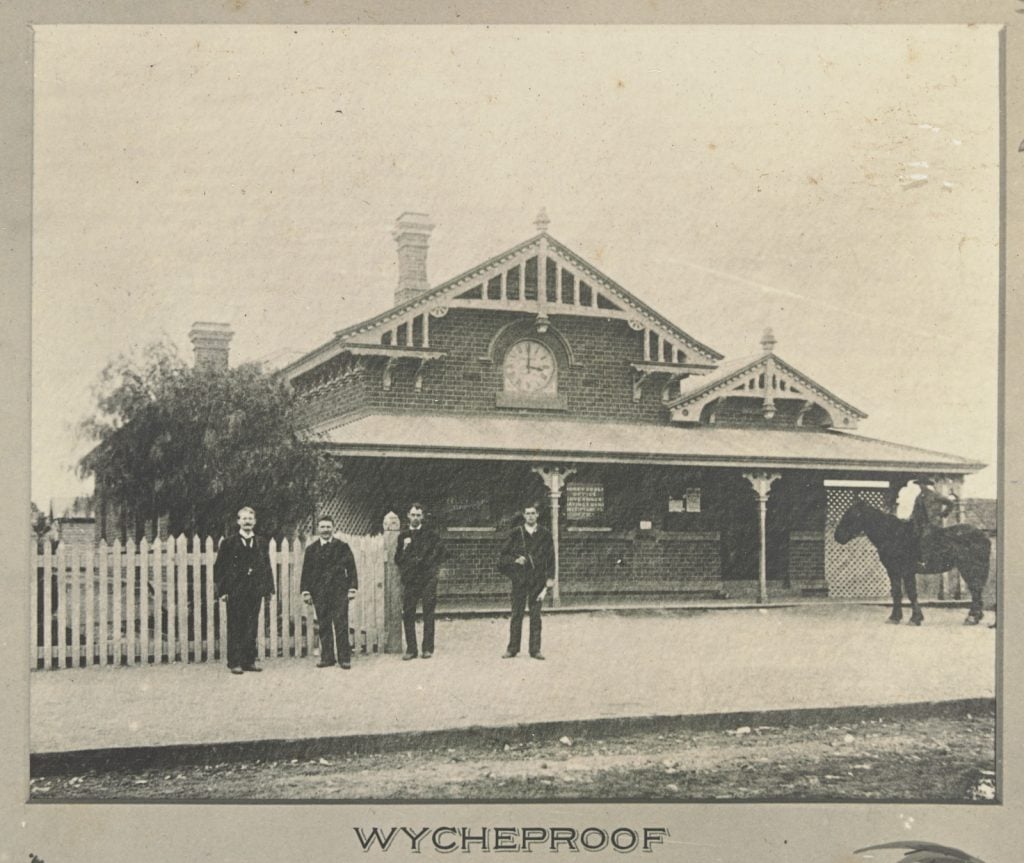
The first thing you notice about the small Wimmera town of Wycheproof (population approximately 600) is the railway line. You can’t miss it – it runs down the middle of the wide main street, appropriately named Broadway. When the train line opened in 1883, it was welcomed as a fast means of transport by local wheat farmers, who used large bullock or horse trains to haul grain to market.
The official opening of the railway took place on Friday, September 28, 1883. Around 3000 people crowded into Broadway for the celebration. Businesses displaying colourful bunting and arches covered with pine branches, flowers and flags carried the messages ‘Welcome and God Save the Queen’ and ‘Success to Wycheproof Railway’. Sports events entertained the local people, as a special train carrying government ministers and officials arrived. Escorted by a calvacade of around 60 selectors on horseback, marching schoolchildren and a band, the official party was driven to the top of Mount Wycheproof to view the land under cultivation. Later, a banquet attended by 150 people was held in a large marquee fronting Broadway. The train line is still open today, although the railway station is closed.
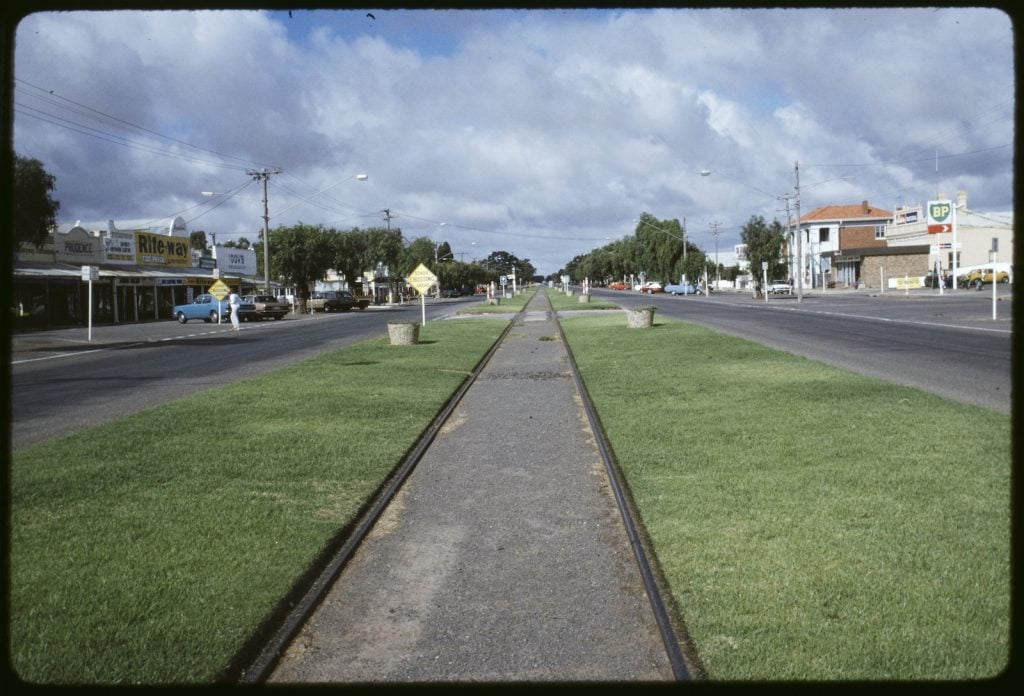
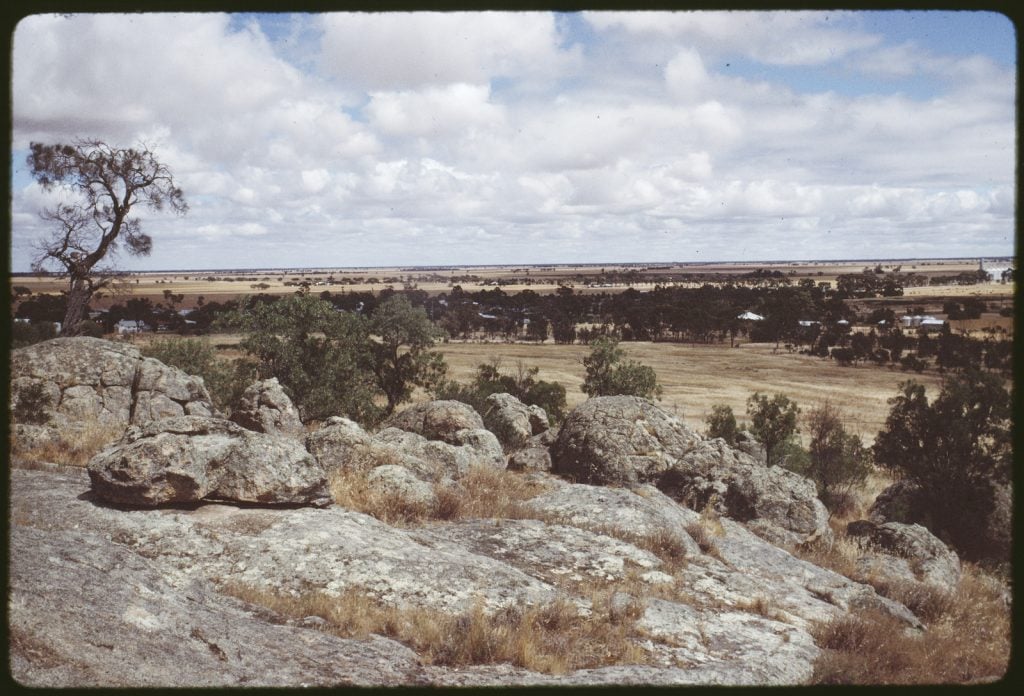
Wycheproof stands in the heart of Victoria’s wheat belt, its wheat silos a symbol of the wealth generated by the vast, flat surrounding land. Above the town is Mount Wycheproof, officially the world’s lowest mountain at just 42.7 metres above the surrounding plains.
The town is famous for its challenging footrace, the King of the Mountain. The race was first held in 1978 and continued until 1989, before being revived in 2023, with a King and a Queen of the Mountain. The race has attracted large crowds: in 1979 the population swelled from 1000 to 7000 on the race day. Entrants run up Mt Wycheproof, a distance of 800 metres, while carrying a bag of wheat on their backs: a 60 kg bag for men and a 20 kg bag for women.

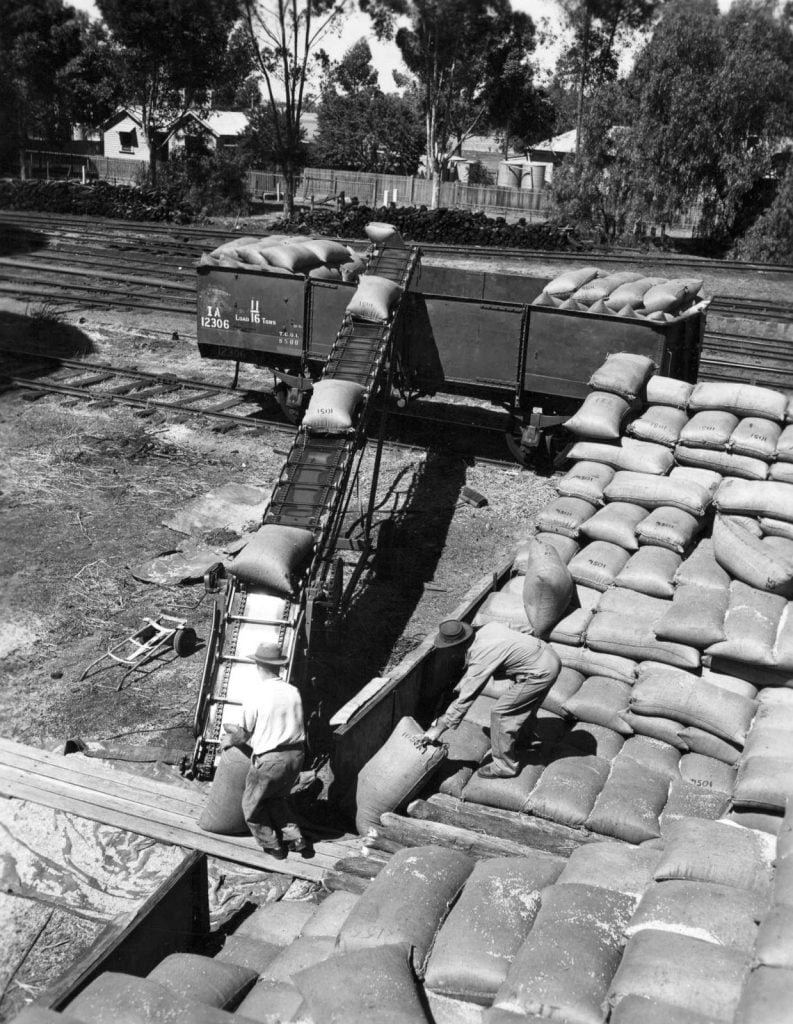
In 1966, the former railway and shire dams were drained and the land transformed into a park, named Centenary Park.
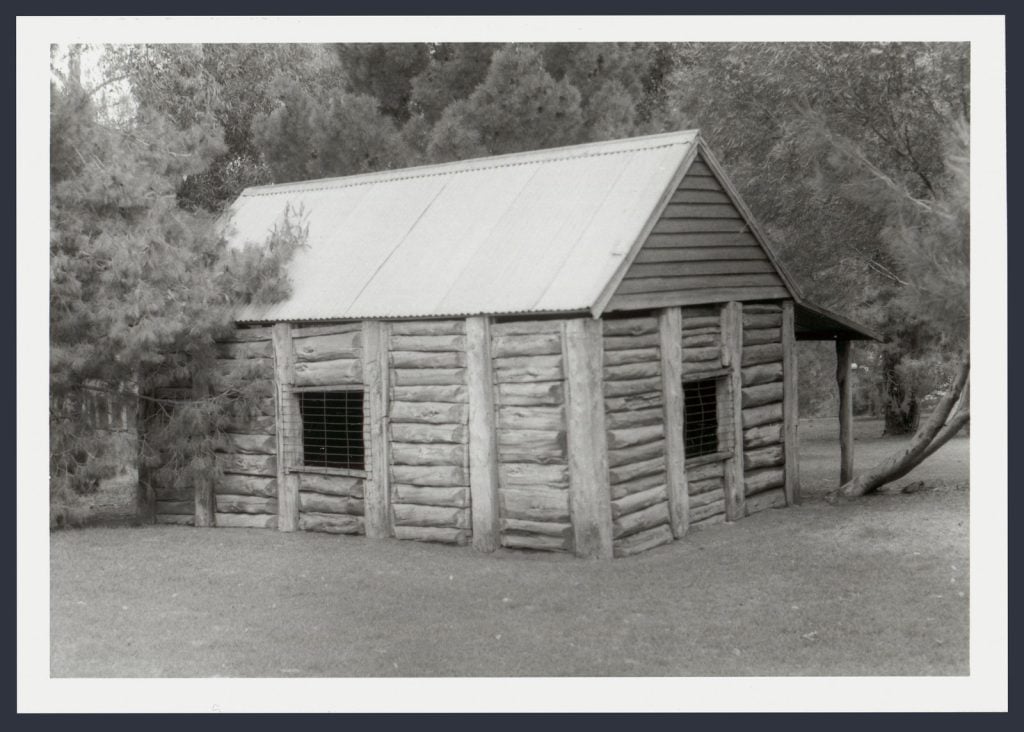
A land of drought and dust…
Frequent drought has always been a part of life in rural Australia, and Wycheproof is no exception. Prolonged drought is often followed by intense dust storms. On January 4th, 1897, residents experienced the worst dust storm they had seen in many years. Strong winds blew dust all day, totally obscuring visibility in the 100 degree (37 degree celsius) heat. The loss of scrub and grass due to the clearing of the land by settlers contributed to drier soil conditions.
When water was in short supply, the railway was used to transport water to the Wycheproof area.
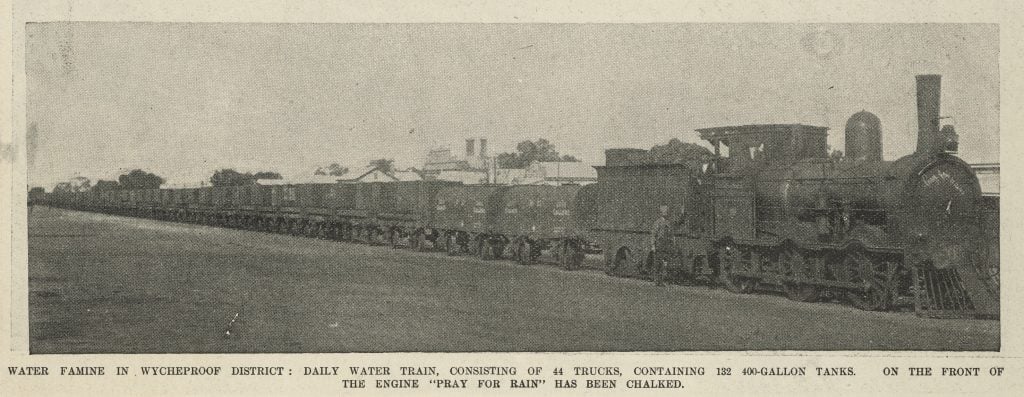

In 1944, drought conditions became so bad, some farmers sold their stock and walked off the land. The drought was followed by severe dust storms, which raged for weeks, affecting farms and homes alike. One storm near Wycheproof blew unceasingly for two days and nights, the worst dust storm known to residents in that area.
A farmer’s wife, who lived 25 miles (40 km) north of Wycheproof with her husband and three daughters, described the terrible conditions: ‘Three months earlier, the dust storms had started in all their intensity. After each storm… there was sand as far as the eye could see… making midday appear as dark as dusk.’ (Sun news-pictorial, 13 December 1944, p 13)
The family had to shovel sand from the house and beat the sand from bedding before they went to bed. Their water tank had been dry for twelve months, so they relied on the dam for water, but even the dam became choked with drifting sand. They attempted to clear it with water from the Waranga Basin, but were forced to use muddy dam water for drinking, bathing and washing clothes. (Sun news-pictorial, 13 December 1944, p 13)
The woman, who was not identified in the news article, moved to Melbourne to find temporary housing for her family (Sun news-pictorial, 13 December 1944, p 13).
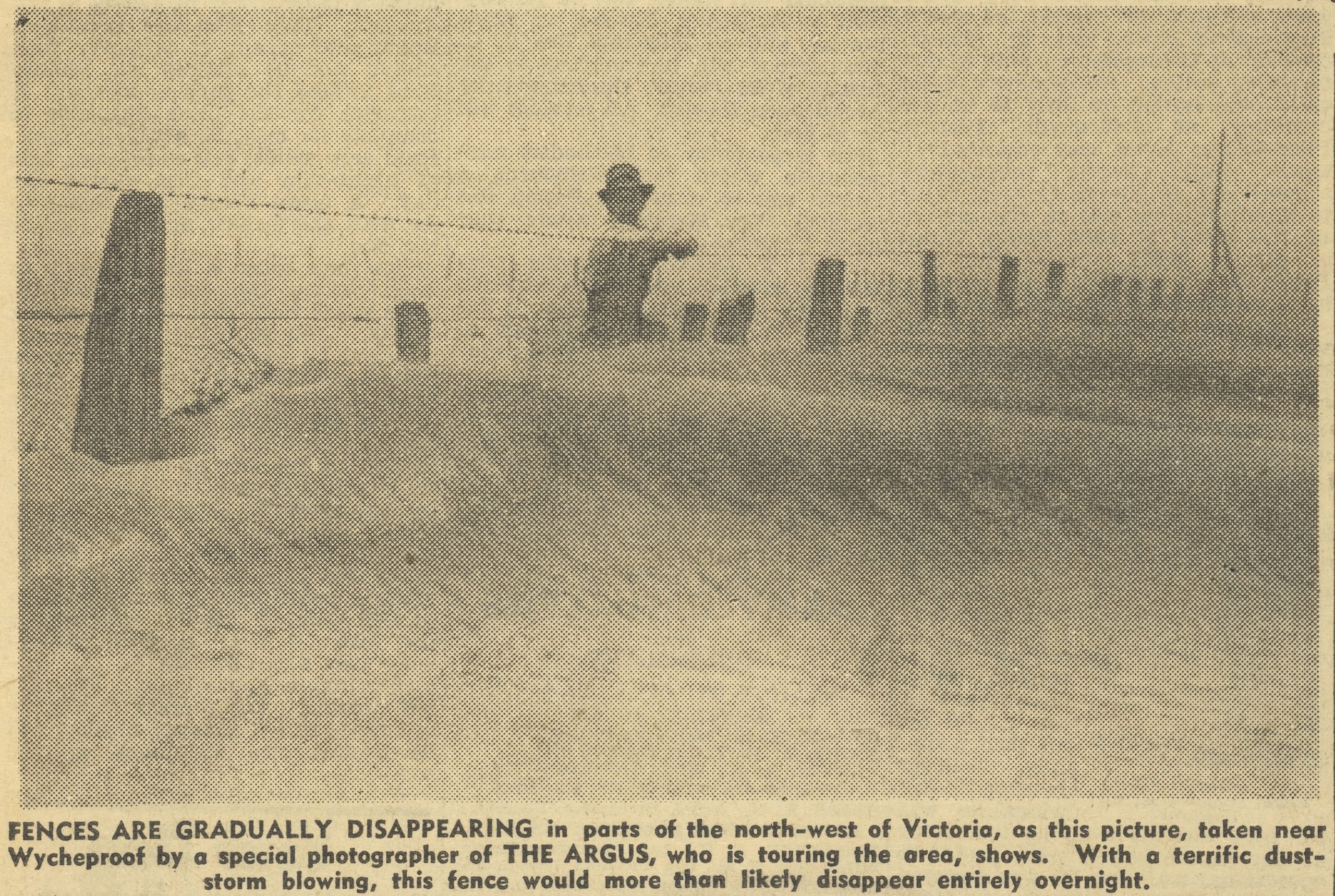
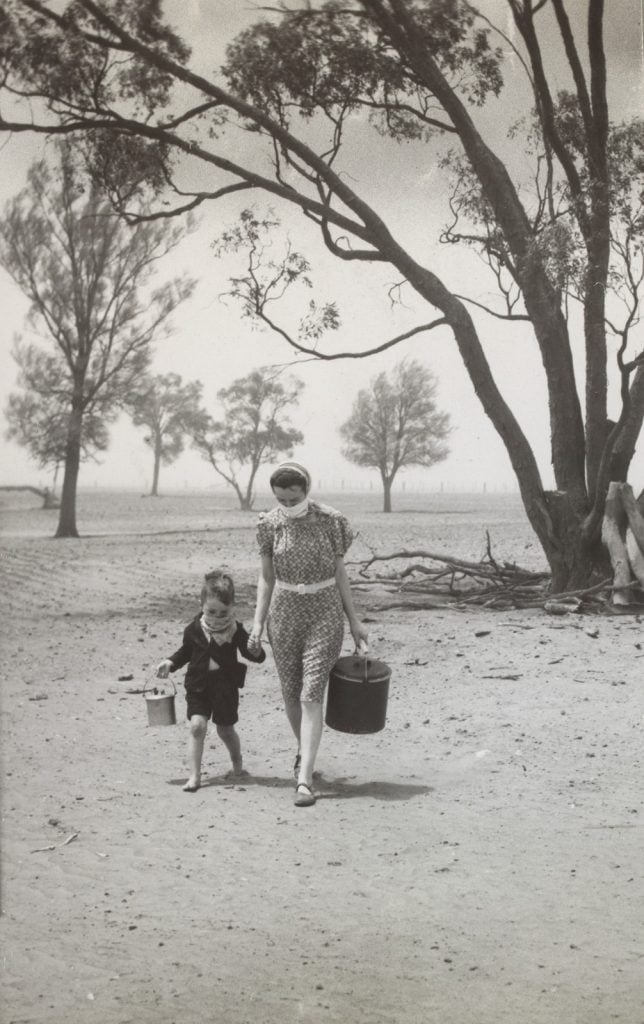
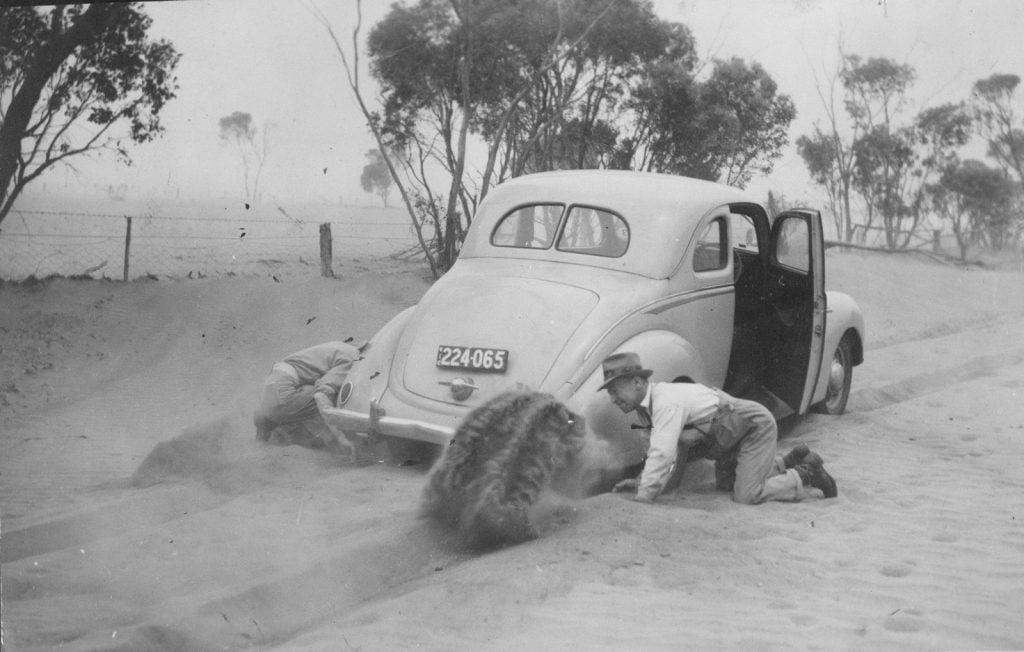
… and flooding rains
In 1903, Wycheproof farmers had endured a drought for months. Dust storms had further dried up water in the drains and channels. Farmers had to deal with the immediate issue of repasturing stock for fodder in areas with more water. They worried that the lack of rain would mean lack of subsoil moisture before ploughing season, affecting the next season’s crops. Then one ‘magnificent’ downpour of rain on the night of March 4 changed all that.
Their relief was immense but not for long: by July that year, floods had swept through the region. The Tyrrell Creek, about three miles (4.8 km) east of Wycheproof, widened into a stream about two miles wide (3.21km) and three or four feet (0.91-1.21 m) deep in places, as it rushed over the land to Lake Tyrrell.
In August 1907, low-lying land was inundated along the channel to Wycheproof. In 1910, the Avoca River submerged part of the railway line near Wycheproof.
In 1923, the Tyrrell Creek flooded again, leaving Wycheproof practically an island.
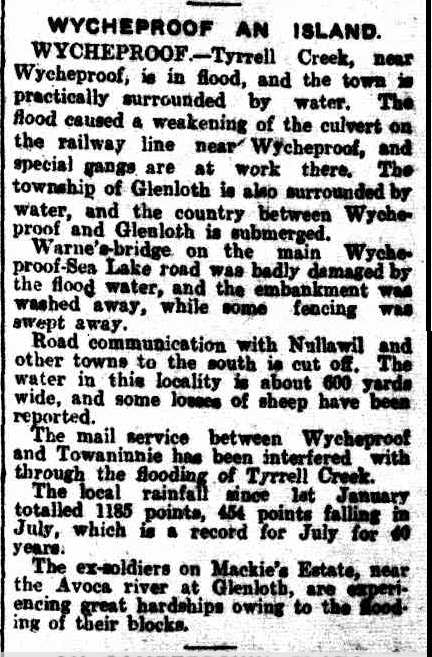
In late November-early December 1933, Victoria experienced extensive flooding after almost three days of continuous rain. Wycheproof people experienced their worst flood in living memory. Floods swept through again in 1939, 1956, 1973, 2011 and 2022 and no doubt there were more.
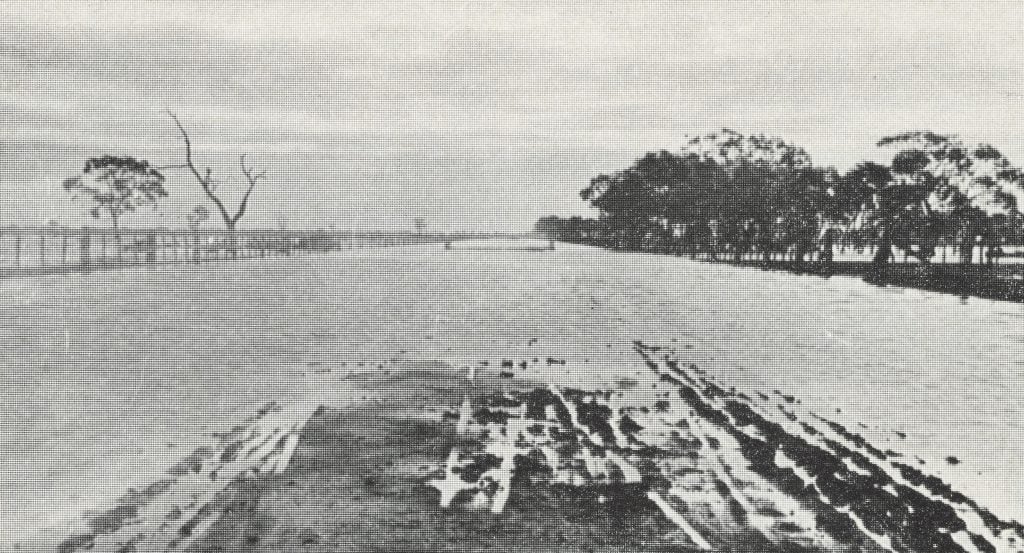

In 1956, the district flooded to an average depth of 2 feet (0.6 m). Roads, including the highway between Wycheproof and Charlton, were flooded. Wycheproof residents sent clothing and other supplies to Charlton, which was worse affected. After yet another flood in January 2011, Wycheproof residents evacuated after sandbags failed to stop floodwaters at the local channel.
In the flood of 2022, nearby Charlton residents evacuated to Wycheproof. Levees were built in both Charlton and Wycheproof.
You can find out more about the history of Wycheproof in our books and eresources (available from home to our Victorian members).
Not a member yet? Sign up now and reward your curiosity.
The National Library of Australia’s Trove website has free historic newspaper articles and other resources about Wycheproof from the nineteenth century to the end of 1954. For newspaper articles, select the ‘Newspapers & Gazettes’ option.
Further reading
Aeria, Gillian and Darling, Alexander, As rivers flood Victoria, heartening stories emerge from Donald and Charlton, ABC Wimmera, 19 October 2022
‘The Mallee flooded,’ The Age, 18 July 1903, page 10
Anon, 2010, Roamin’ round the mount: with past and present residents of Wycheproof, Wycheproof and District Historical Society, Wycheproof, Vic. This book has a chapter: ‘The saga of the dust storms’ by Hazel Dunn, who was photographed with her son in The Argus newspaper on 29 December 1944 (p 6)
Boyce, M P, 1970, Pioneers & progress 1846-1906: a history of Wycheproof, M P Boyce, Wycheproof, Vic
‘New royals rule the mountain’, The Buloke times 6 October 2023, pages 1, 8-9. Article about the King and Queen of the Mountain event.
McLennan, Jennifer, 1994, Time, tide and the Tyrrell: a history of the Shire of Wycheproof, Hargreen Publishing, North Melbourne, Vic
Milburn, Allan. Avoca and Wycheproof run. Wycheproof Historical Society, 2002.
Miller, J, 2008, Steaming up Broadway: 125 years of railway in Wycheproof, Bart ‘n’ Print, Bendigo, Vic. Compiled by the Wycheproof Historic Society for the 125th anniversary and reunion of railway workers in October 2008
Morrison, Margaret E, (Compiler)1967, To Wycheproof and back, Back-to-Wycheproof Committee, Wycheproof, Vic
Sartori, Emma, ‘Kerang and Wycheproof put on flood alert’, Bendigo Advertiser, 17 January 2011
The Sun news-pictorial (Melbourne), 2 December 1933 and 5 December 1933

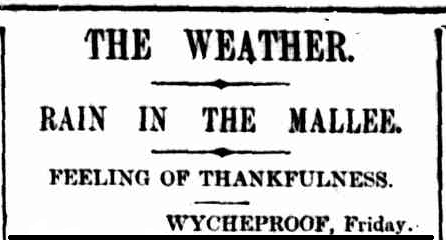

Funnily enough, I thought Wycheproof was in the Mallee rather than the Wimmera. I think it’s close to the border between the Mallee and Wimmera but just inside the Mallee.
Some years ago, I drove through the town during a mouse plague – that was a challenge, and the smell of dead mice was horrific.
Hi Jennifer,
I think Wycheproof may be known colloquially as being in the Mallee, but officially, it is in the Wimmera.
Our map of the Wimmera and Loddon districts produced by the Department of Crown Lands and Survey in 1866 shows Mount Wycheproof located in the Wimmera.
Call number MAPS; 826 A 1866
The map has been digitised, so you can see it here http://handle.slv.vic.gov.au/10381/118454
The catalogue record is here https://find.slv.vic.gov.au/permalink/61SLV_INST/1sev8ar/alma997805683607636
The book Avoca and Wycheproof run 1846-1922 by Allan Milburn, published by the Wycheproof Historical Society in 2002 (Call number SLTF 994.59 M58A) shows a copy of an application by Robert McCredie for a lease of land on the Avoca Wycheproof run in 1846. The Commissioner’s district is listed as Wimmera.
I have thoroughly enjoyed reading your blog Barbara. I was drawn to thinking of the community in each of the episodes related in the blog. It serves to remind me of the resilence that rural people must have to recover from any natural disaster.
I’m glad you enjoyed the blog, Brent. It’s hard for us to imagine the difficulties rural people have faced over the years. The community is a great source of strength in those difficult times.
What a wonderful story. Found it fascinating.
I’m glad you enjoyed the blog, Tommaso. It’s great to get feedback from readers.
A very interesting piece on Wycheproof and what I liked is thats its very accurate and later this year the Wycheproof Historical Soc. is launching a book about the history of the area as this ydear it is 150 years since James O’ Connor founded the tpown
Many thanks for your kind comments Allan. We have your book Avoca and Wycheproof Run 1846-1922 in our collection. We look forward to receiving your new book. Local sources are so important for building up the history of an area.